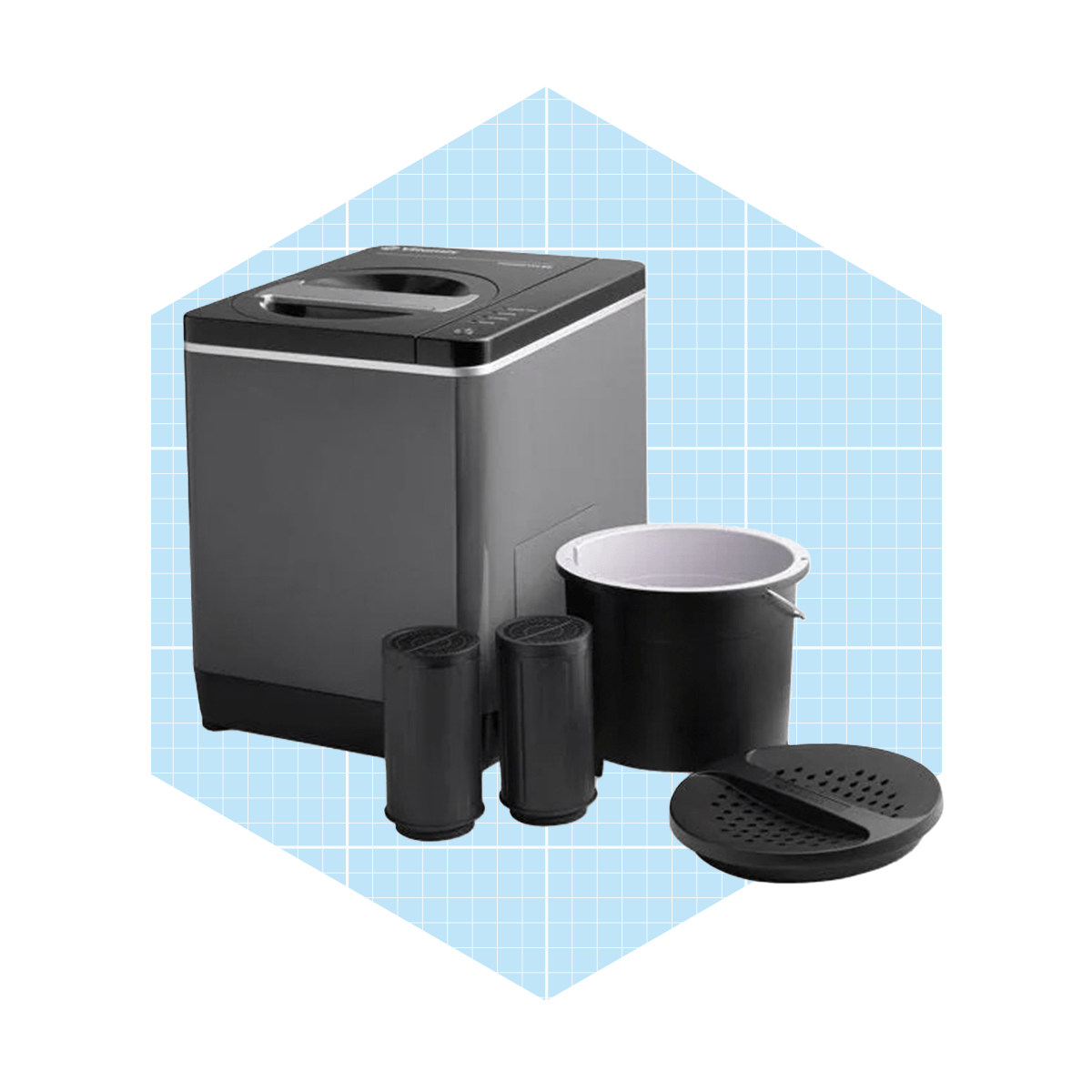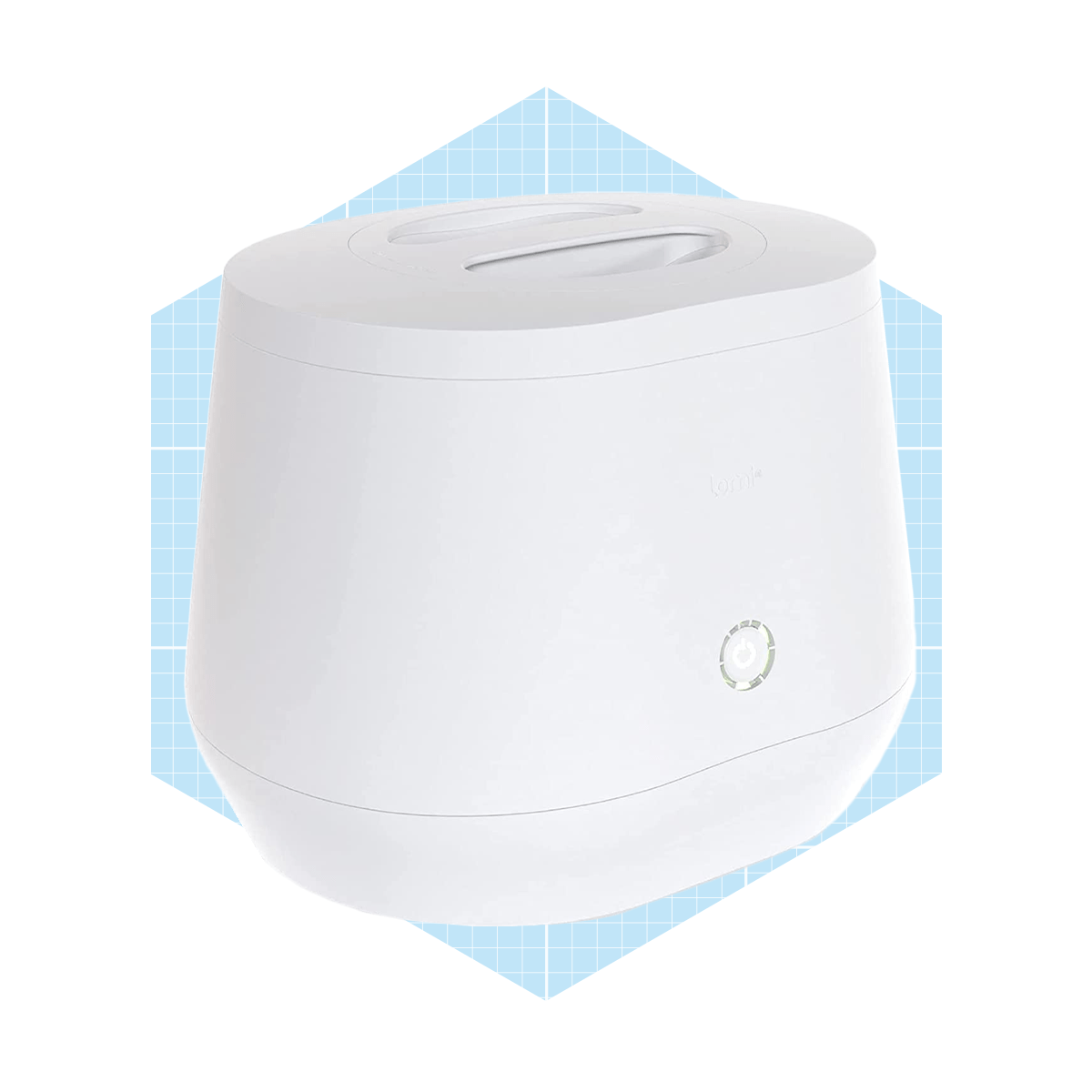Composting your kitchen waste has always been a good idea. With some communities now mandating the separation of food scraps from trash, it’s also a way to stay on the right side of the law. But if you’re an apartment dweller, you might not have space for a composter or a compost pile.
Electric composters — also called food recyclers — offer a way out of this dilemma. Electric composters reduce food waste to a dry, soil-like substance you can safely put in your garden.
The amazing thing is, they do this in a matter of hours, not the months or even years it usually takes to produce compost. Plus, unlike a regular composter, an electric composter does its job while controlling methane gas emissions and odors.
Electric composters are fairly new, and performance varies from model to model. The quality of the resulting compost also varies, with only a few models producing a nutrient-rich soil amendment. Others produce nutrient-deficient, dehydrated food chips that are better as mulch than fertilizer.
All electric composters offer an easy way to keep food waste out of the trash, and they do so without attracting flies!
What Is an Electric Composter?
An electric composter is a kitchen appliance. Some are small enough for countertops; others are the size of a garbage can.
You use one like a regular compost pail: Open the lid, drop in the food, press a button and the composter does the rest. The composting cycle takes five to 48 hours, depending on model. Then you retrieve the dehydrated product from a drawer at the base of the machine and spread it in the garden.
Many companies producing electric composters are startups in the crowdfunding stage, but there are some well-reviewed brands on the market. With prices from $400 to more than $1,000, the decision to experiment with electric composting doesn’t come cheaply.
How Do Electric Composters Work?
Electric composters generally process food scraps in three stages.
- First, the device heats the scraps to a temperature of about 160 degrees, which kills pathogens and weed seeds. Heating continues until the food is completely desiccated,
- Then it’s ground up into granules.
- Finally, the compost cools before you remove it from the appliance.
Some electric composters tumble the food waste as it’s being heated it so it dries faster. Others offer separate compartments for the three stages, so you can add more scraps while the unit is already working on a batch. Still others feature more than one composting mode to process meat and some plant-based plastics as well as vegetable matter.
Most electric composters pass the air released in the drying process through a carbon filter that removes atmospheric pollutants and odors. An entire cycle typically consumes about 1- to 1.5-kWh of electricity, about the same as running an electric space heater for an hour.
The quality of the compost also varies. An organic starter should be added to the food scraps to produce soil-like compost that plants can use directly; some, but not all, manufacturers supply this. Without this starter, the final product is often devoid of nutrients but still suitable as mulch or filler.
Why Get an Electric Composter?
While some see an electric composter as unnecessary, others want one to keep food scraps out of the garbage. Alternative composting methods, including manual compost tumblers and worm composting, require daily attention and take a long time to work, especially if you keep adding new material.
The benefits of electric composters include:
- No odors: It’s virtually impossible to control odors from regular composters. Electric composters are odor-free.
- Compact design: Electric composters take up little counter or floor space. You won’t need space in the garden for a compost pile or a corner of the patio for a manual compost tumbler.
- Automatic operation: There’s no manually spinning a tumbler or shoveling material onto a pile. Just drop in the food scraps and retrieve the compost when the cycle finishes.
- Simple to use: It eliminates the green-to-brown ratio required for manual composting.
- Pest-free: Electric composters don’t attract flies, rodents and other vermin.
Before you buy, you should also weigh the drawbacks:
- Limited testing: Electric composting is still in the development phase. Only a few products have been around long enough to attract more than a handful of user reviews.
- Increased energy costs: Electric composters don’t use a lot of electricity, but they do use some, and the costs can add up if you use the appliance daily.
- They do take up space: Although compact, electric composters do take up space, which can be an issue in a small kitchen.
How To Use an Electric Composter
The specific method of using an electric composter depends on the model, but a general procedure could be summarized as:
- Insert food.
- Press the start button. Some units start automatically, and some can be operated by an app on your mobile device.
- Retrieve the compost by pulling out a drawer or tray.
The instructions for the model you buy will specify what you can compost. Most units can handle vegetative matter, coffee grounds and even eggshells, but not all can handle meat. Also, not all models let you add more food before the end of the cycle.
Best Electric Composters
A few electric composters have been around long enough to gain a following. Some of the top ones are:
Vitamix FoodCycler F-50

The Vitamix FoodCycler F-50 is a countertop model with a healthy fan base. It’s about the size of an air fryer and takes four to eight hours to complete a cycle. Its carbon filtration system effectively eliminates odors, and it can handle most kitchen waste items, including chicken bones.
Pela Lomi

The Pela Lomi composter is also a countertop model that holds about 50 percent more material than the Vitamix. It offers three composting modes, the longest of which can even compost some types of plastic. The company also supplies Lomi Pods — organic starter material that makes the compost nutrient-rich.
Kalea Electric Composter

Although the manufacturer’s web site states the Kalea Electric Composter isn’t widely available yet, it promises to be a hit. It’s a floor unit with three compartments, letting you add more material while the unit is working. It takes longer to complete a cycle (about 48 hours), but the extra time results in more nutrient-rich compost.
Did you miss our previous article...
https://rsssuperfeeds.com/life-hacks/can-recycled-tires-make-durable-concrete






